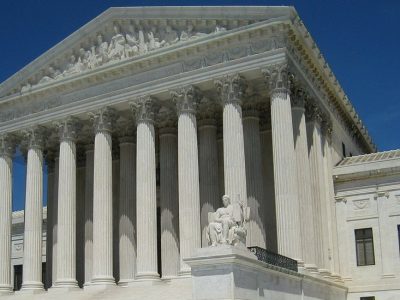NEPA in the Supreme Court: The Seven Counties Oral Argument
Legal Planet: Environmental Law and Policy 2024-12-12

The Supreme Court heard oral argument recently in the Seven Counties case. The issue in the case is the scope of an agency’s duty to consider the environmental effects of its actions. Several arguments popped up in the discussion that appealed to at least some of the Justices. We think that they would do well to rethink them.
Each of the arguments distracts attention from what ought to be the key question: what impacts should the agency take into account in making its decision? We’ll discuss four of those arguments here.
Argument #1: Because a new statute puts page limits on impact statements, agencies should be able to consider only obvious direct effects. To begin with, the page limit on impact statements doesn’t include appendices, where a lot of the details about particular impacts could be covered. Moreover, this argument really amounts only to paper shuffling. According to the D.C. Circuit, the statute governing new railroad lines required the agency to consider a wide range of environmental impacts in deciding whether to approve the line. What sense does it make to say that these environmental impacts have to be considered by the agency and discussed in a different document (the agency’s explanation of its final decision) but don’t even have to be mentioned in the environmental impact statement?
Argument #2: The agency should get special deference about what to put in the impact statement because NEPA is only procedural. This has the same problem as the preceding argument. If the agency will need to consider an environmental impact in making its final decision, it will only get ordinary judicial deference at that stage. Does it make sense to have two different standards of review for the environmental discussion in the final decision and the environmental discussion in the environmental impact statement?
Argument #3: The Court should narrow the scope of NEPA case because it was passed before the enactment of a bevy of other environmental statutes like the Clean Air Act. This is a weird argument for two reasons. First, all the conservatives on the Court say they are textualists. None of the later statutes amended the text of NEPA, so how does a textualist justify taking them into account? Second, all those new statutes were passed within about a decade of NEPA. Or in other words, over forty years ago. It’s a little late in the day to suddenly discover that, within a few years of NEPA’s passage, the meaning of NEPA changed in a fundamental way that no one in succeeding decades ever noticed.
Argument # 4. Agencies need not consider impacts that are remote in space and time, if those impacts are regulated by someone else. This was the main argument made by the sponsors of the railroad project involved in the case. It has two major flaws.
First, it would be a difficult standard to apply on several dimensions:
- Some agency actions like new regulations aren’t limited to specific times and places. How does the test apply, for instance, to fuel efficiency standards for new cars and trucks?
- How far away does an event have to be to qualify as “distant in space,” and how many years equate to “distant in time”? The railroad seems to think that a couple of miles and a few months are enough. Really?
- What if the other agency has only limited regulatory power? And what constitutes “another agency”? Many cabinet-level departments are broken into different subagencies with different assignments. Does that count?
Second, it’s easy to think of cases where the proposed standard makes no sense. Suppose a federal agency is considering a funding proposal to construct a facility near a major airport for research into dangerous viruses. Other agencies regulate health risks at such facilities but cannot eliminate the risk entirely, and still others deal with the national spread of epidemics. The harm could be remote in time and mostly remote geographically. The petitioners want us to believe the agency can’t consider the risk of someday causing a national epidemic. That seems absurd.
————–
We hope, when it comes time to draft opinions, the Justices will think through these arguments a little more fully and head in a different direction. The outcome of the case is a foregone conclusion because in the entire 54 years the statute has been in effect, the Supreme Court has never upheld a NEPA claim. But there are better ways of getting there, and there are worse ways.